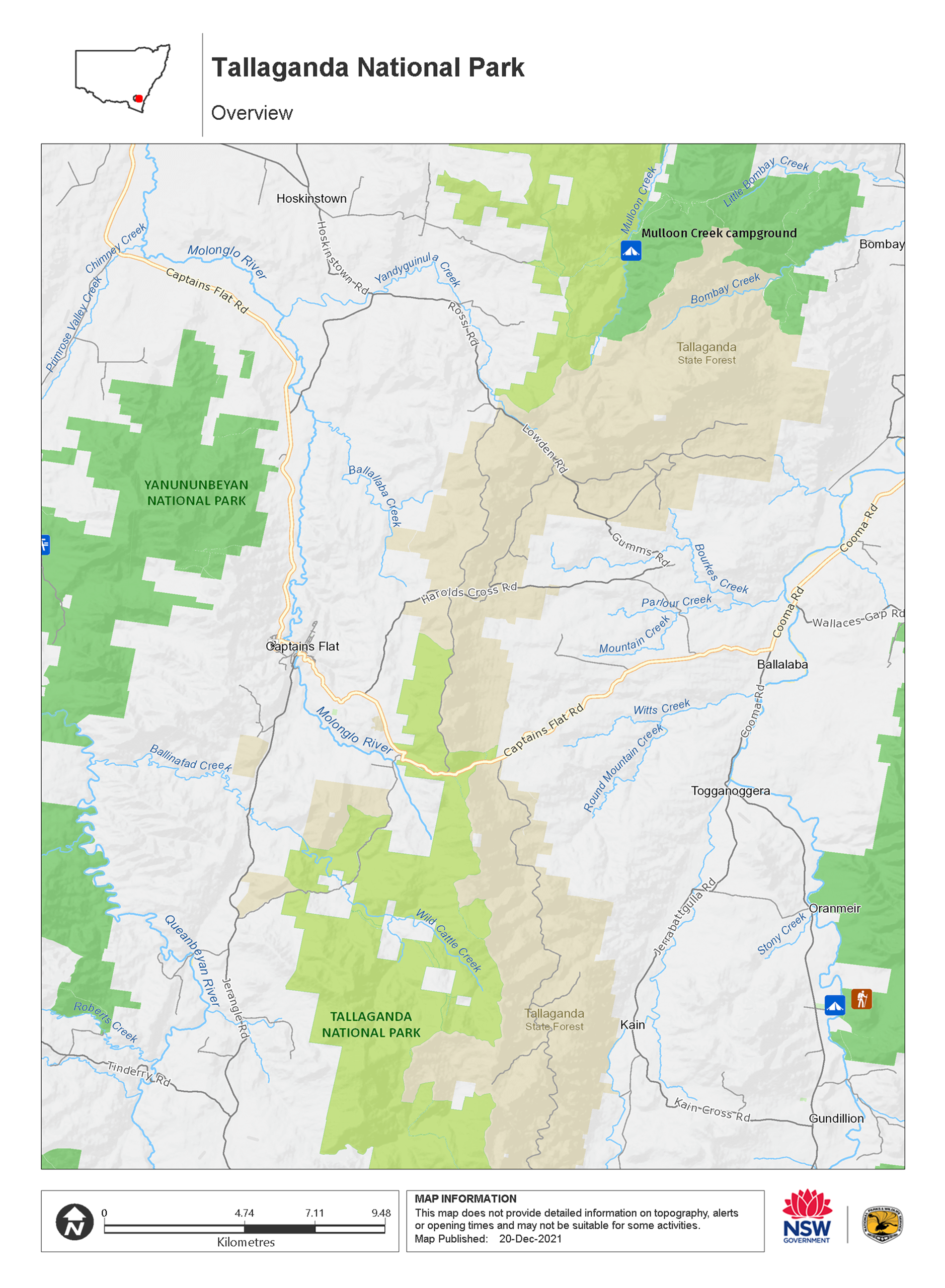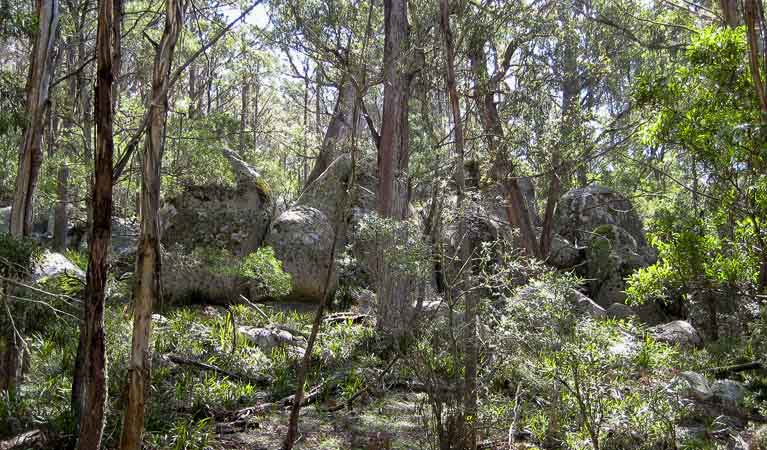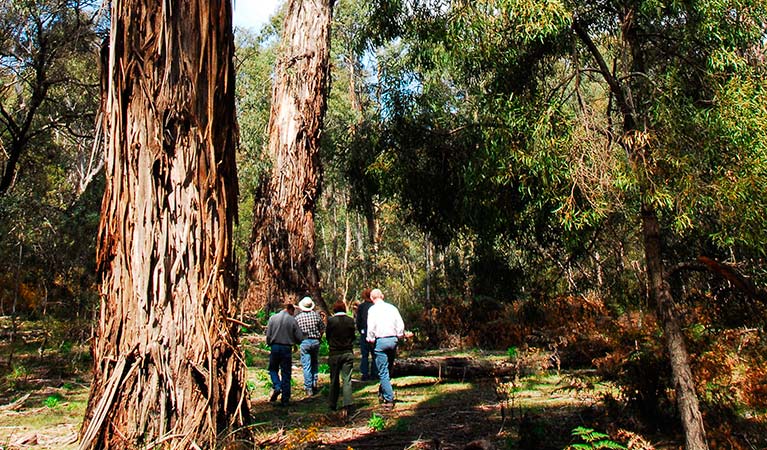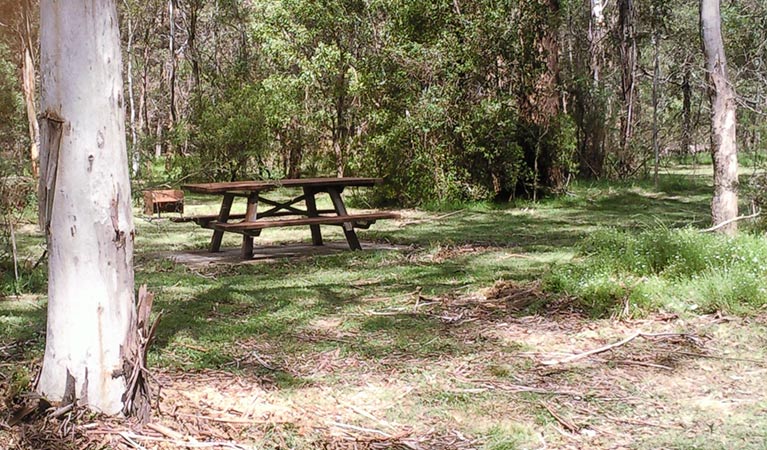Tallaganda National Park
Overview
Tallaganda National Park’s unique range of forest environments provides excellent opportunities for bushwalking, camping, mountain biking, orienteering, and 4WD touring.
Read more about Tallaganda National Park
Across its thousands of hectares, Tallaganda National Park plays host to a huge variety of environments. Up at its highest points, you’ll discover subalpine snow gums and even high-altitude swamp. On the eastern side of the Great Dividing Range, you’ll find tall, moist forest dominated by ribbon gum and narrow-leaved peppermint, while on its west slopes are forests of mountain gum.
For the self-reliant traveller, this diversity of environments offers excellent opportunities for bushwalking, orienteering, 4WDing, and mountain biking. There are trails criss-crossing the park, but make sure you’ve got a topographic map – as well as everything else you’ll need - before you set out.
For those wanting to relax, a picnic by Mulloon Creek, some birdwatching and wildlife-spotting – wombats, red-neck wallabies and the spotted-tail quoll are all found here – or overnight camping are all recommended. Listen out for the calls of the powerful and barking owls if you decide to pitch your tent.
Local alerts
For the latest updates on fires, closures and other alerts in this area, see https://uat.nswparks.cloud/visit-a-park/parks/tallaganda-national-park/local-alerts
Contact
- in the Country NSW region
Tallaganda National Park is always open but may have to close at times due to poor weather or fire danger.
-
-
Queanbeyan office
02 6229 7166
Contact hours: Monday to Friday, 8.30am to 4.30pm. - Level 3, 11 Farrer Street, Queanbeyan NSW 2620
-
Email: npws.alpinequeanbeyan@environment.nsw.gov.au
-
Queanbeyan office
-
-
Snowy Region Visitor Centre
02 6450 5600
Contact hours: 8.30am to 5pm daily. Closed Christmas Day. - 49 Kosciuszko Road, Jindabyne NSW 2627
-
Email: srvc@environment.nsw.gov.au
-
Snowy Region Visitor Centre
Visitor info
All the practical information you need to know about Tallaganda National Park.
Map

Map legend

Maps and downloads
Nearby towns
Braidwood (38 km)
Braidwood was the first town to be listed on the NSW State Heritage register. Today, you can tour the town on a self-guided heritage walk and see dozens of impressive historic buildings dating from the gold-rush days.
Bungendore (53 km)
Proclaimed in 1837, the township of Bungendore quickly became an important crossroad linking Goulburn, Braidwood, Queanbeyan, Canberra and Cooma. Many of the most important buildings - the post office, an Anglican Church and the Bungendore Inn - were constructed in the 1840s.
Canberra (68 km)
Canberra is the home of Australia's Parliament House, National Gallery, National Museum and War Memorial, as well as many more significant cultural and architectural offerings. Kids of all ages love the interactive science and technology at Questacon.
Learn more
Tallaganda National Park is a special place. Here are just some of the reasons why:
Wild inhabitants

Because there is such a range of environments, many animals call Tallaganda National Park their home. Some, like the echidna, spotted-tail quoll, and red-necked wallaby, are quite numerous. The forest is home to many tree-dwelling animals, including the greater glider, sugar glider, and vulnerable eastern pygmy possum, all of which are more likely to be seen as dusk falls, as are some of the bats that live here. The park is also an important habitat for some far less cute creatures, including funnel web spiders (so take care) and velvet worms, which look quite like caterpillars, live on logs and bear live young. More than 55 species of birds have been reported as living in Tallaganda National Park. Nocturnal birds like the white-throated nightjar, and powerful and barking owls, can be heard after dark – the latter has a call that ranges from a dog-like bark to a high-pitched scream. During the day, watch out for pink robins, olive whistlers and flame robins, and, if you’re walking through casuarinas on some of the dry, western ridges, you’ll likely see (and hear) glossy black cockatoos.
Way to grow

There’s a diverse range of forest types represented in Tallaganda National Park, including moist forest, dry forest, and smaller amounts of low open forest and subalpine woodlands, particularly in the southern section of the park which features snow gums. This is the best place to go looking for wildflowers during spring, when bluebells and buttercups sprout through the short grass. There’s also some rare high-altitude swampland that’s part of the Montane Peatlands and Swamps Endangered Ecological Community.
Fun for all

While there are few facilities at Tallaganda, there’s lots of opportunity to get back to nature. Fire trails cross the park and are great for mountain bikers, and some of the walks are for experienced, self-reliant walkers (always take a topographic map with you). Those with a 4WD might like to bump across these trails in their vehicles. There’s also a campground and picnic area at Mulloon Creek that’s accessible by 2WD and is a great spot for overnight camping.
Plants and animals protected in this park
Animals
-

Spotted-tailed quoll (Dasyurus maculatus)
The spotted-tailed quoll is the largest remaining carnivorous marsupial on the Australian mainland. It’s protected as a vulnerable species in NSW.
Education resources (1)
What we're doing
Tallaganda National Park has management strategies in place to protect and conserve the values of this park. View the detailed park and fire management documents.

